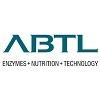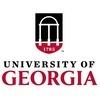Explore all the information on
Poultry nutrition - Other additives
Alternative feed additives have promising importance in broiler production due to the ban on the use of certain antibiotics. The most used antibiotic alternatives in broiler production are phytogenics, organic acids, prebiotics, probiotics, enzymes, and their derivatives. Antibiotic alternatives have been reported to increase feed intake, stimulate digestion, improve feed efficiency, increase growth performance, and reduce the incidence of diseases by modulating the intestinal microbiota and immune system, inhibiting pathogens, and improving intestinal integrity. Simply, the gut microbiota is the target to raise the health benefits and growth-promoting effects of feed additives on broilers. Therefore, naturally available feed additives are promising antibiotic alternatives for broilers.
Farmers and feed companies have witnessed unforeseen price increases of feed materials during the last year, which has further escalated recently due to the inconceivable and brutal war in Ukraine. Prices of grains, protein, oils, and...
Comments : 1
Recommendations: 2
INTRODUCTION Necrotic enteritis (NE) is a poultry illness caused by toxin-producing strains of Clostridium perfringens (CP) type A, type C and type G (1). NE is a pathology of global concern, with important consequences for flock productivity and economic viability (2). The total cost of NE outbreaks worldwide has been estimated to be over 2 billion dollars annually (3, 4). NE can present itself as a sudden increase in mortality or simply as a subclinical illness (2). CP is...
Comments : 2
Recommendations: 0


Feed Conversion Ratio: Unveiling the Secrets of Sustainable Livestock Production
Suggested link
Abstract published in Current Opinion in Biotechnology 2022, 75:102689. https://doi.org/10.1016/j.copbio.2022.102689. ...
Comments : 0
Recommendations: 0
...
Comments : 0
Recommendations: 0
With the aim to evaluate the effect of the supplementation of different concentrations of a Moringa oleifera liquid extract in the drinking water on the hematology profile, and performance of broiler chickens, two experiments were carried out at Universidad ISA. Each experiment had four (4) treatments (0, 1.87, 3.75 y 7.5 liters of M. oleifera extract in 937.5 liters of drinking waters), which were randomly distributed in a Completely Randomized Design. Each treatment had six (6)...
Comments : 3
Recommendations: 0
INTRODUCTION Due to the price volatility of conventional feed ingredients, there is an ever-growing need to include relatively inexpensive alternatives such as fats in the diets. Such an approach might relatively reduce feed costs and simultaneously increase the energy density of the diets to meet the requirements of the modern fast-growing broilers. Fats are known to be a concentrated energy source, with at least twice as much energy as carbohydrates and proteins [1]. Alongside...
Comments : 0
Recommendations: 0
1. Introduction The use of insects in animal nutrition is a promising alternative in order to obtain a sustainable protein source to feed the world. Considering the current challenges of overpopulation and feed supply for animals and humans, new feed ingredients are needed to provide a secure food production chain in the future [1]. Edible insects have been shown to be highly nutritious and healthy food sources (rich in protein and fat), with beneficial nutraceutical...
Comments : 1
Recommendations: 2
Carbohydrate (CHO) is the main energy source in the chicken diet for body maintenance and production. Ingested diet is digested and absorbed in the small intestine. The small intestine structure performs an important role in the digestion and absorption of nutrients [15], and nutritional manipulation can alter this function [26]. Several studies have reported that different dietary CHO sources such as fructo-oligosaccharide [19] and mannan-oligosaccharide [8], induce higher villus height and...
Comments : 0
Recommendations: 1
...
Comments : 0
Recommendations: 0
We are presently going through a challenging period of high prices of raw materials and a limited availability of some of these materials. The use of less common raw materials that are readily available, and potentially less expensive, can be an alternative to traditional protein and energy sources and may help reduce the pressure on feed costs. However, new types of ingredients need extra attention to be paid to make sure they are suitable for feed processing, are free of contaminants,...
Comments : 1
Recommendations: 2


Mycotoxin Testing in the Feed Chain: A Risk Prevention Strategy for Raw Material Suppliers, Grain Storage Facilities and Processors, and Feed Manufacturers
Suggested link
...
Comments : 1
Recommendations: 1
Introduction Protein is a major component of animal tissues and products. Thus, adequate intake of dietary protein is essential to optimise growth, production performance, and feed efficiency in poultry. Soybean meal is most commonly used protein source and used around 20-30 % in poultry feed. Now days protein feed ingredients like soybean meal are consistently increasing in cost; so protein has become one of the most expensive nutrients in poultry diet. After feed consumed by...
Comments : 1
Recommendations: 1
...
Comments : 0
Recommendations: 0
...
Comments : 0
Recommendations: 0


DL-methionine can replace methionine-hydroxy anlalog products in a ratio of 65:100 in laying hen fee
Suggested link
The Poultry Research Foundation, in conjunction with WPSA -Australian Branch, cordially invites you to the 34th Australian Poultry Science Symposium at the Sheraton Grand Sydney Hyde Park.
The Australian Poultry Science Symposium is the premier avian science conference in Australia, attracting delegates from right across the country and around the world. This year our conference will focus on an over-arching theme of: “Global Volatility and Poultry Industry...
Comments : 0
Recommendations: 0
...
Comments : 0
Recommendations: 1
...
Comments : 1
Recommendations: 3
...
Comments : 0
Recommendations: 1


Feed Conversion Ratio: Unveiling the Secrets of Sustainable Livestock Production
Suggested link
Phileo is constantly working to improve its range of yeast probiotics, giving farmers and companion animal keepers effective and consistent products, backed by extensive trials evidence and practical user experience. The...
Comments : 3
Recommendations: 5

















.jpg&w=3840&q=75)















